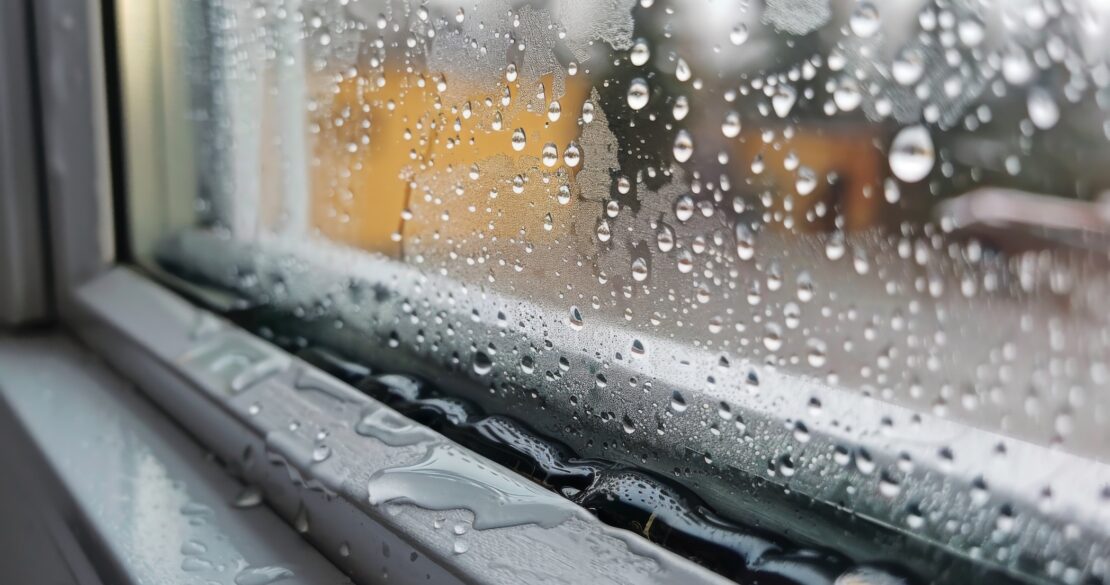When homeowners think about hurricane protection, their mind often goes directly to the roof. But when those strong winds, rain, and debris come through, your windows and doors are also susceptible to serious damage—that is unless the proper precautions are taken.
This guide covers essential strategies to safeguard your exterior glass surfaces from extreme hurricane damage.
Table of Contents
Why Prioritize Hurricane Protection: Understanding The Risks
Before we dive into specific glass protection tactics, let’s touch upon the biggest threats coastal homeowners face when hurricanes strike:
Wind Damage
Hurricane winds can range from 74 to 157 mph or greater—enough power to shatter glass. To adequately protect your windows and glass doors from these high-speed winds, it’s important to use wind-resistant materials and design techniques.
Flying Debris
With high winds comes the risk of dangerous wind-borne objects. If a branch, road sign, or debris from a neighbor’s house hurdles toward your windows and doors, it could break the glass and send sharp shards flying into your home, potentially harming anyone still inside.
Pressure Changes
Low atmospheric pressure means a more intense hurricane. The difference in pressure between the low-pressure outside air and the relatively high pressure in your home can cause significant strain on glass windows and doors. This pressure differential is enough to break glass if it’s not properly installed and secured.
Storm Surge
In coastal areas, powerful hurricane winds can push large amounts of water onshore, resulting in an extreme, sudden sea level rise. This phenomenon is called storm surge. Depending on the severity of the hurricane, storm surge can reach higher than 13 feet. Understandably, the pressure of this much water is enough to break any glass that’s not specifically designed to withstand extreme external force.
Pro Tip: Check out FEMA’s flood maps to discover your area’s elevation and flood risk.
Permanent Protection: Sustainable Long-Term Solutions
If you live in a hurricane-prone area, invest in these permanent safeguards for reliable storm protection:
Impact-Resistant Glass
Impact-resistant glass (or hurricane glass) offers elevated protection from powerful hurricane forces, consisting of several critical layers:
- Durable laminated glass panes with special silicone glazing to withstand heavy impact and remain largely intact even when broken
- A thermoplastic interlayer to help keep glass in place if it breaks
In addition to enhanced storm protection, impact-resistant windows and doors offer increased security, improve your home’s energy efficiency, and fortify your indoor-outdoor noise barrier.
Hurricane Shutters
Although hurricane fabric (see below) can offer basic protection from wind, flooding, and debris, the best way to reinforce glass windows is to install hurricane shutters (a.k.a. storm shutters).
Your options include:
- Accordion Storm Shutters: Highly insulating shutters that unfold like an accordion to cover your window
- Bahama Storm Shutters: Single-piece louvered shutters mounted from above and propped open at an angle when not in use
- Colonial Storm Shutters: Traditional louvered shutters closing inward from the sides
- Hurricane Panels: Corrugated steel or aluminum tailored to cover your door or window
- Roll-Down Shutters: Shutters attached at the top of the window that roll down over the window via a button or hand crank
| Shutter Type | Pros | Cons |
| Accordion | Easy deployment, permanently installed, operated from inside, good for large openings | More expensive, less aesthetically pleasing to some, may require professional installation |
| Bahama | Architectural style, shade & privacy, adjustable light control, permanently installed | More expensive, may not suit all kinds of windows |
| Colonial (Bermuda) | Classic style, security & privacy, decorative, permanently installed | More expensive, difficult to install |
| Fabric | Lightweight, easy installation, lets light in, inexpensive, easy storage | Custom-fit required, not as strong as others, can be damaged by debris |
| Hurricane Panels | Most affordable, easy installation/removal, compact storage, strong & durable | Time-consuming to install, require storage space, block light & visibility |
| Roll-Down | Easy operation (can be motorized), excellent protection, security & privacy, permanently installed | Most expensive, may require professional installation |
Pro Tip: Hurricane shutters are not a last-minute solution. They should be installed well before a hurricane hits.
Resilient Window & Door Frames
Upgrade exterior framing components using sturdy materials like vinyl and fiberglass. Unlike traditional wood frames, these materials are practically resistant to rot, rust, corrosion, and other common types of moisture damage—extending the lifespan of windows and doors that are regularly exposed to heavy storm conditions.
Immediate Action: Protecting Your Glass in the Short Term
While last-minute solutions aren’t our first recommendations, there are a few things you can do to help protect your glass windows and doors if you’re in a rush or on a tight budget:
Boarding Up Windows & Doors
Say you don’t have enough time to install permanent hurricane shutters. Covering your windows with plywood is an easy short-term solution that can help prevent damage from hurricane-force winds and debris.
Just follow these steps:
- Get ⅝-inch plywood sheets and 3- or 4-inch barrel bolts from a hardware store like Lowe’s or Home Depot.
- Cut the sheets to fit tightly inside your window and door frames.
- For large windows and doors, you may need to use 2×4’s to attach multiple pieces of plywood together.
- Bolt the sheets in place (with one bolt every 12 inches).
Window Film or Fabric
A heavy-duty, flexible material that stretches over your window, window film,, or fabric offers minimal protection from debris and wind damage. Although it isn’t hurricane-rated, hurricane film can help hold broken glass in place, reduce the risk of injury from projectile glass shards, and guard against wind and rain.
Sandbags (for doors)
Placing sandbags at the base of glass doors can minimize the impacts of storm surges by providing a barrier against rising floodwaters. For optimal water resistance, place a plastic sheet or tarp in front of the door as a liner.
Outdoor Precautions
Before the onset of hurricane season (the beginning of June), make sure all large trees and shrubs are well-trimmed to reduce the risk of fallen branches. Then, as soon as you receive word of a potential hurricane coming your way, secure all loose outdoor furniture and anchor your mailbox, fences, and other heavy objects.
Order Custom Hurricane-Resistant Windows & Doors From Atlantic Glass!
When it comes to fortifying your glass windows and doors, it’s important to select a dependable glass company that specializes in hurricane-resistant design.
Don’t wait until storm warnings to implement these critical safety measures. Contact Atlantic Glass, your local Wilmington, NC glass specialist, to evaluate your home’s hurricane readiness and explore custom protection solutions.
Related Content:



